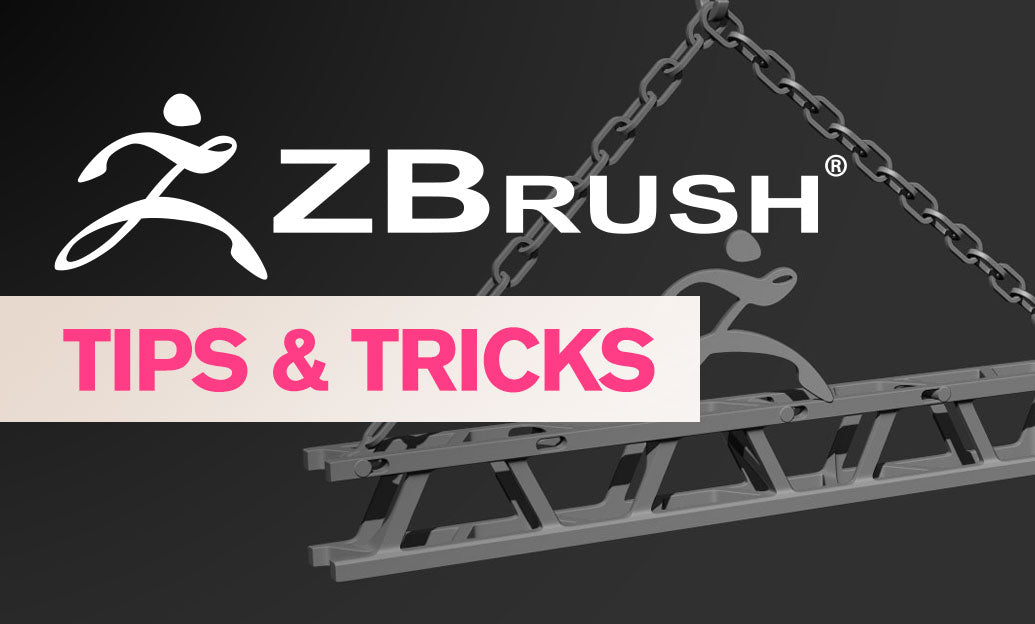Your Cart is Empty
Customer Testimonials
-
"Great customer service. The folks at Novedge were super helpful in navigating a somewhat complicated order including software upgrades and serial numbers in various stages of inactivity. They were friendly and helpful throughout the process.."
Ruben Ruckmark
"Quick & very helpful. We have been using Novedge for years and are very happy with their quick service when we need to make a purchase and excellent support resolving any issues."
Will Woodson
"Scott is the best. He reminds me about subscriptions dates, guides me in the correct direction for updates. He always responds promptly to me. He is literally the reason I continue to work with Novedge and will do so in the future."
Edward Mchugh
"Calvin Lok is “the man”. After my purchase of Sketchup 2021, he called me and provided step-by-step instructions to ease me through difficulties I was having with the setup of my new software."
Mike Borzage
Harnessing Cross-Software Automation to Revolutionize Design Workflows
October 16, 2025 8 min read


Introduction to Automation in Design Workflows
In modern design environments, cross-software automation has emerged as a vital strategy to streamline the increasingly complex workflows that designers, engineers, and architects face daily. By leveraging automation tools, professionals are now able to bridge the gap between disparate software applications, ensuring seamless data exchange and coordinated task execution. Cross-software automation refers to the process of integrating different design platforms—ranging from 3D modeling programs to simulation and rendering tools—to create a unified workflow that minimizes the need for manual intervention. This transformation is indispensable because it dramatically reduces the potential for human error, accelerates project timelines, and enhances overall productivity. With the advent of advanced technologies, these automation strategies are no longer optional enhancements but rather critical components for achieving optimal performance in today's competitive design landscape.
Defining Cross-Software Automation and Its Relevance
The key to understanding cross-software automation lies in appreciating its fundamental role in uniting various software ecosystems, each specializing in different aspects of design processes. Designers can now implement solutions that automatically transfer data, update parameters, and even trigger separate processes between systems such as computer-aided design (CAD), finite element analysis (FEA), and rendering platforms. This integration is particularly invaluable in projects where precision and consistency are paramount. The benefits of such automated workflows include:
- Enhanced efficiency through reduced repetitive tasks
- Streamlined communication between teams using different digital tools
- Consistent design protocols that ensure quality across project outputs
- Reduction in error rates due to minimized manual data input
Bridging Disparate Software Applications: Objectives and Key Questions
At the heart of cross-software automation is the objective to create a harmonious environment where multiple applications can work in tandem. This integration raises key questions: Why should workflows be optimized, and what tangible benefits can be expected? The process of automation is designed to eliminate the friction caused by manual data reentry and cumbersome file conversions. The anticipation is that by optimizing these processes, the design cycle can be dramatically shortened, and creativity can be steered towards higher value tasks. Additionally, automation helps in the establishment of a structured and predictable process where the flow of information is monitored and continuously improved upon. The critical evaluation of expected benefits includes operational cost reduction, improved project scalability, and enhanced data integrity. In this digital transformation era, every second saved by automating mundane tasks translates into added time for innovative thinking and detailed refinement of design concepts. The seamless integration of automation tools empowers teams to focus on strategic decision-making, thereby propelling overall project success and client satisfaction.
Exploring Cross-Software Automation Tools
In the rapidly evolving technological landscape of design software, a variety of automation tools have emerged, each addressing unique aspects of cross-software integration. These tools encompass a spectrum of solutions such as APIs, plugins, and scripting integrations that enable diverse systems to communicate effectively. At the core of these advancements is the ability to establish a reliable connection that transcends the limitations imposed by proprietary formats and standalone processes. Leading automation tools are equipped with robust features that include error handling, synchronization protocols, and efficient data parsing methods. Their functionalities are designed to cater to the specific needs of various design applications, thereby ensuring that regardless of the software environment, there remains a consistent method for exchanging information. This consistency is crucial, as even minor discrepancies during data transfer can result in significant delays and rework. Consequently, automation tools function as the critical glue that holds multi-environment design projects together, providing a seamless workflow that minimizes manual labor and enhances overall operational efficiency.
Technological Landscape: APIs, Plugins, and Scripting Integrations
The backbone of modern cross-software automation lies in three major technological approaches: application programming interfaces (APIs), plugins, and scripting integrations. APIs provide a standardized method for different software applications to exchange data using well-documented protocols, thereby fostering interoperability. Plugins, on the other hand, extend the native functionalities of software tools, allowing designers to incorporate custom features or automate repetitive tasks. Scripting integrations offer a flexible approach, where specialized scripts are written in languages such as Python or JavaScript to automate specific processes across platforms. Each of these approaches comes with its own set of advantages and challenges, yet they all converge on the goal of creating an integrated and efficient design pipeline. Some of the key benefits of these tools include:
- Modular design: Allowing customization and scalability
- Flexible integration: Enabling tailored solutions for diverse workflows
- Enhanced reliability: Facilitating consistent data exchange across applications
- Rapid prototyping: Accelerating development cycles in design projects
Integration Challenges and Compatibility Considerations
While the promise of automation is enticing, the implementation comes with its fair share of challenges. Not every automation tool integrates seamlessly with every design application. Compatibility issues may arise due to differences in data formats, version constraints, or varying API protocols. Moreover, the deployment of automation solutions demands substantial upfront investment in terms of time, skill, and resources to customize integration flows. For instance, when synchronizing data between a 3D modeling platform and a simulation tool, developers must ensure that geometrical and parametric data are accurately mapped and maintained. This often involves the development of custom scripts or plugins to bridge any disparities in data structure or format. Additionally, the dynamic nature of software updates can sometimes disrupt previously stable integrations, necessitating continuous monitoring and adjustments. Therefore, it is imperative for organizations to conduct thorough compatibility assessments and have contingency plans in place. The judicious use of these tools, coupled with continuous evaluation and adaptation, fosters a resilient design workflow that is capable of handling both routine tasks and unexpected changes in the software environment.
Strategies for Optimizing Design Workflows
Designers and engineers continually pursue strategies that enhance the efficiency of their workflows, and the adoption of cross-software automation is one such transformative trend. Optimizing design workflows involves a systematic approach where the integration of various software platforms is deliberately structured to yield tangible productivity improvements. Crucial to this is the establishment of standard data formats and communication protocols that serve as the foundation for interoperability. By aligning the data exchange methods across software systems, the potential for miscommunication is drastically reduced. For example, using universally accepted file formats or implementing industry-wide standards can simplify the data transition process, ensuring that vital design parameters are transmitted without loss of fidelity. Additionally, custom scripting and plugin development play pivotal roles in catering to the unique needs of different projects. These tailored solutions allow teams to automate repetitive tasks, enforce design consistency, and even generate dynamic content based on real-time data inputs. The collective impact of these strategies is an infrastructure where manual interventions are minimized, thereby reducing error rates and improving overall design quality.
Best Practices and Tailored Automation Solutions
Implementing effective automation requires adherence to best practices that not only address immediate workflow inefficiencies but also pave the way for future scalability. One of the foremost strategies includes developing and maintaining a modular automation framework. This framework relies on:
- Standard data formats: Ensuring consistency in design and engineering specifications
- Custom scripting: Developing algorithms that automate error-prone tasks
- Tailored plugin development: Creating extensions that address specific workflow needs
- Comprehensive documentation: Providing clear guidelines to support ongoing maintenance
Evaluating Workflow Performance: Metrics and Tools
Optimizing design workflows does not end with the implementation of automation tools; it extends into continuous evaluation and refinement. The successful deployment of automation must be measured by its ability to deliver improved efficiencies and error reduction over time. To this end, several performance metrics are critical, including cycle time reduction between design reviews, increased throughput in product lifecycle management, and marked decreases in manual intervention steps. Tools that monitor these metrics in real time allow organizations to gauge the true impact of automation and identify areas for further improvement. Furthermore, data analytics platforms can aggregate performance data over extended periods to reveal trends, pinpoint recurring issues, and assess the overall return on investment. With these insights, organizations can fine-tune their automation strategies to better align with evolving project requirements and broader industry standards. Ultimately, the integration of such evaluative measures is instrumental in ensuring that the benefits of automation are sustained and even augmented as projects scale in complexity and size.
Conclusion
In summary, cross-software automation has established itself as a critical catalyst in optimizing design workflows, with profound implications for the efficiency, accuracy, and overall success of modern design projects. By bridging disparate software applications, automation tools facilitate a seamless flow of data and processes between various design platforms, thereby reducing the risk of human error and accelerating project timelines. The technological innovations in APIs, plugins, and scripting integrations have given designers the freedom to leverage tailored automation solutions that address their unique operational challenges, ensuring that data consistency and precision are maintained across every stage of the design lifecycle. As the design landscape becomes increasingly complex, these automated workflows are not just advantageous but essential for maintaining a competitive edge.
Reflecting on Key Strategies and Technological Trends
The strategic implementation of automations such as standardized data formats, custom scripting, and comprehensive plugin development has demonstrably improved the synergy between varied design applications. By meticulously integrating these components, organizations witness dramatic reductions in manual data manipulation, enabling creative resources to focus on innovation rather than repetitive administrative tasks. Additionally, the ongoing evaluation of automated workflows using sophisticated metrics has provided a more granular view of process efficiencies, thereby fostering a culture of continuous improvement. This culture is instrumental in identifying not only the immediate performance gains but also in paving the way for long-term enhancements in design quality and product integrity. As technology continues to evolve, designers and developers are encouraged to embrace these scalable solutions, which promise further integration, enhanced collaboration, and a robust foundation for tackling future challenges in the design industry.
Future Potential and Recommendations for Embracing Automation
Looking forward, the potential for further evolution in cross-software automation is vast and largely untapped. Emerging tools and scalable solutions are poised to redefine how data is shared and transformed among diverse design applications. As we stand on the brink of another technological leap, it is recommended that designers and software developers actively invest in automation frameworks that not only meet current demands but are also flexible enough to adapt to future innovations. Embracing these technologies can lead to profound improvements in productivity, collaboration, and overall quality of design outputs. It is essential for industry professionals to remain agile, continuously exploring and integrating advanced automation strategies into their workflows. In doing so, organizations not only improve their operational efficiency but also cultivate a forward-thinking mindset that is indispensable in today’s rapidly evolving technological landscape.
Also in Design News

Cinema 4D Tip: Advanced Techniques for Enhancing Particle Textures in Cinema 4D
October 16, 2025 2 min read
Read More
Bluebeam Tip: Streamline Document Consistency with Custom Text Styles in Bluebeam Revu
October 16, 2025 2 min read
Read More
ZBrush Tip: Mastering ZRemesher for Optimal Topology in ZBrush
October 16, 2025 2 min read
Read MoreSubscribe
Sign up to get the latest on sales, new releases and more …


